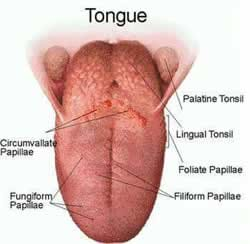Mastitis is the inflammation of the breast. The first sign of mastitis is a real, swollen, usually painful, area on the breast. The redness and swelling is not necessarily a sign of infection. Bacteria are not always present, and antibiotics may not be needed if self-help measures are started promptly. You may get mastitis when milk leaks into breast tissue from a blocked duct. The body reacts in the same way as it does to an infection by increasing blood supply.
This produces the inflammation (swelling) and redness. [b]Signs[/b] [li]A red area on part of the breast, often outer, upper area, which may be painful to touch [/li] [li]A lumpy breast which feels hot to touch [/li] [li]the whole breast aches and may become red[/li] [li]flu-like symptoms - aching, increased temperature, shivering, feeling tearful and tired- this feeling can sometimes start very suddenly and get worse very quickly[/li] Note: One might not have all the signs at the same time when suffering from mastitis [b]Prevention [/b] [li]try to avoid suddenly going longer between feeds - if possible cut down gradually[/li] [li]make sure your breasts don't become overfull[/li] [li]avoid pressure on your breast from clothing and fingers[/li] [li]start self-help measures at the first sign of any red area on your breast[/li] [b]Factors which make mastitis more likely[/b] [li]difficulty with attaching(fixing) your baby to the breast - this may mean that the breast is not drained well[/li] [li]pressure from tight fitting clothing, particularly your bra, or finger pressing into the breast during feeds[/li] [li]engorgement[/li] [li]a blocked duct[/li] [li]stress and tiredness[/li] [li]sudden changes in how often the baby is feeding, leaving the breasts feeling full[/li] Mastitis starts with poor milk drainage. If your baby is not in a good position, it may be hard for the baby to take milk effectively and some parts of your breast may not be drained during a feed. Unless this is improved you may get mastitis again and again. If in doubt, contact your midwife, heath visitor for help with attaching and positioning your baby for feeding. [b]Self-help measures [/b] These will also help to clear blocked ducts and engorgement [b]keep on breastfeeding [/b] - you may feel ill and discouraged but continuing to breastfeed is the quickest way to get better - and won't hurt your baby. [li]feed your baby more frequently or express between feeds if your breasts feel uncomfortably full[/li] [li]express gently after feeds, so that your breast are kept as well drained as possible, until you feel better[/li] [li]check that your baby is well positioned and attached to our breast - if in doubt seek help from your midwife, heath visitor or an experienced nursing mother.[/li] [li]feed from the side which is sore first to drain it as thoroughly as possible[/li] [li]try feeding with your baby indifferent positions[/li] [li]soften your by expressing a little milk or running warm water over it, so that the baby finds it easier to feed well[/li] [li]warmth on your breast may help you to feel more comfortable[/li] [li]use a wide toothed comb to stroke gently over the red area and towards the nipple to help the milk flow, or massage gently[/li] [li]check for any clothing which is pressing into your breast, this includes bra - some women find it helpful to go without a bra - bumps or knocks from toddlers can also have the same effect.[/li] [li]rest[/li] [li]remember what you feel like, so if symptoms start to come back, you can start self-help measures right away[/li] [b]Medical Treatment[/b] If despite all these measures and suggestions you still not feel better after a while then seek help from your doctor. [b]Ibuprofen[/b] - reduces the inflammation, relieves pain and reduces temperature. Take 400mg three times a day after food [ul][li] ibuprofen should not be taken by women who have asthma, stomach ulcers or are allergic to aspirin. the levels of ibuprofen which pass to the baby are small. Ibuprofen is safe to take whilst breastfeeding [/li][/ul] [b]paracetamol[/b]- relieves pain and reduces temperature but has no anti-inflammatory action. Take two 500mg tablets four times a day. [b]Aspirin[/b] - should not be taken by breasfeeding mothers [b]Antibiotics [/b]- may be needed if mastitis is due to a bacterial infection. Most antibiotics can be safely taken whilst breastfeeding Note: Antibiotics can make the baby produce loose, runny stools and become irritable and restless, but the baby won't be harmed and will get better when you finish the antibiotics. Antibiotics kill natural bacteria in the body as well as those causing illness. This may allow thrush (Candida) to flourish. Eating live yoghurt or taking acidophilus capsules may help to restore the balance. Also if sore nipples develop after the course of antibiotics consider the possibility of [a href="?id=1015-670-1&t=Thrush-And-Breastfeedin"]thrush[/a] on the breast
Source:




 Excellent
Excellent








